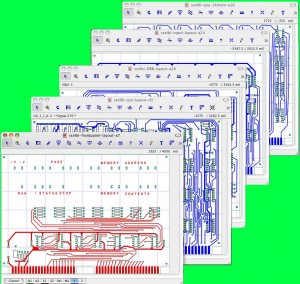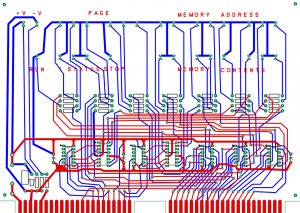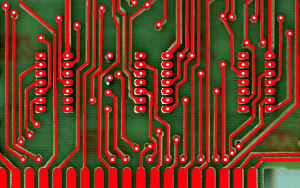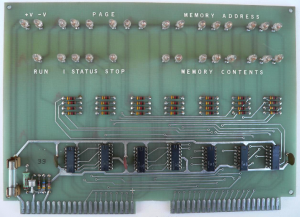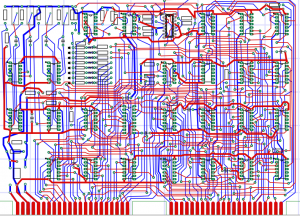Making progress on the SCELBI – I now have draft layouts of all 5 of the cards needed for a basic 8H system in CAD. Some are much closer to production ready than others, but they are all there. One interesting thing to note is that, so far, I haven’t found a single error in the SCELBI schematics that I’ve used as reference.
I have also ordered enough 256×1 memories to populate 4 1K boards, so that I can build a full 4K 8H system. Turns out that American Microsemiconductor has 6000 MM1101A/A1 National parts with a date code 81 at 3.55 each. They are listed as 3-Input NAND-Function Logic Gate, but I’m convinced that that is a mistake. I hope I’m not wrong. 🙂 Older Intel 1101s will easily cost over $10 each and you’ll need 32 of them for just a single 1K board. Ignoring the price, you may have trouble finding that kind of quanity.
American Microsemiconductor usually has high prices, but I’ve been able to find a couple of fairly good deals for RAM there. By the way, if you decide to order a bunch for yourself, be sure to talk to someone and ask for a quanity discount.
http://store.americanmicrosemiconductor.com/mm1101a-a1n.html
For the SCELBI, I’m going to be selling bare card sets, so you will need to find your own components, which is why I mentioning this opportunity. Since I haven’t built up a system with these parts, I can’t guarantee that they will work in the SCELBI.
By the way, I just recently figured out what the H stood for, in 8H. H stands for hobby. We knew that B stood for business, in the 8B system, but somehow it never dawned on me that H stood for hobby. So it seems that from the beginning that SCELBI had plans to create a range of machines. One of the great questions is what would have happened if Nat Wadsworth hadn’t suffered the heart attacks. Could SCELBI, with their vision and engineering skills been able to evolve and remain competitive?
Lastly, I hope to get together a SCELBI podcast in the next couple of weeks.

